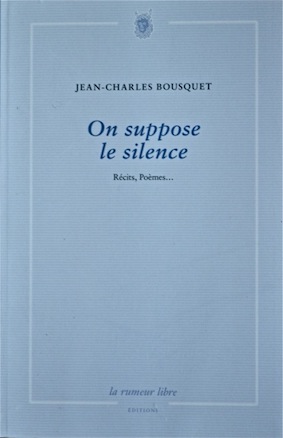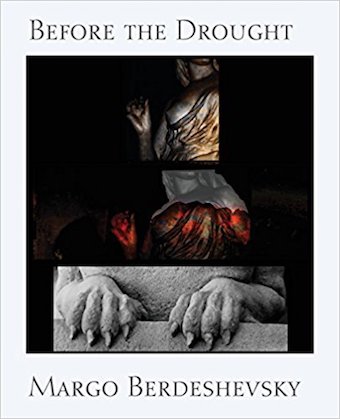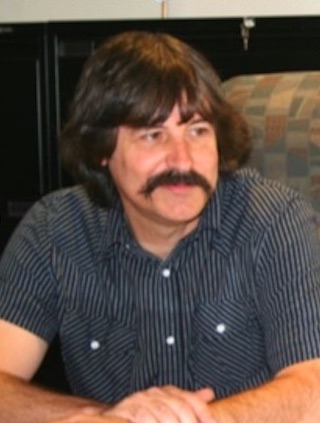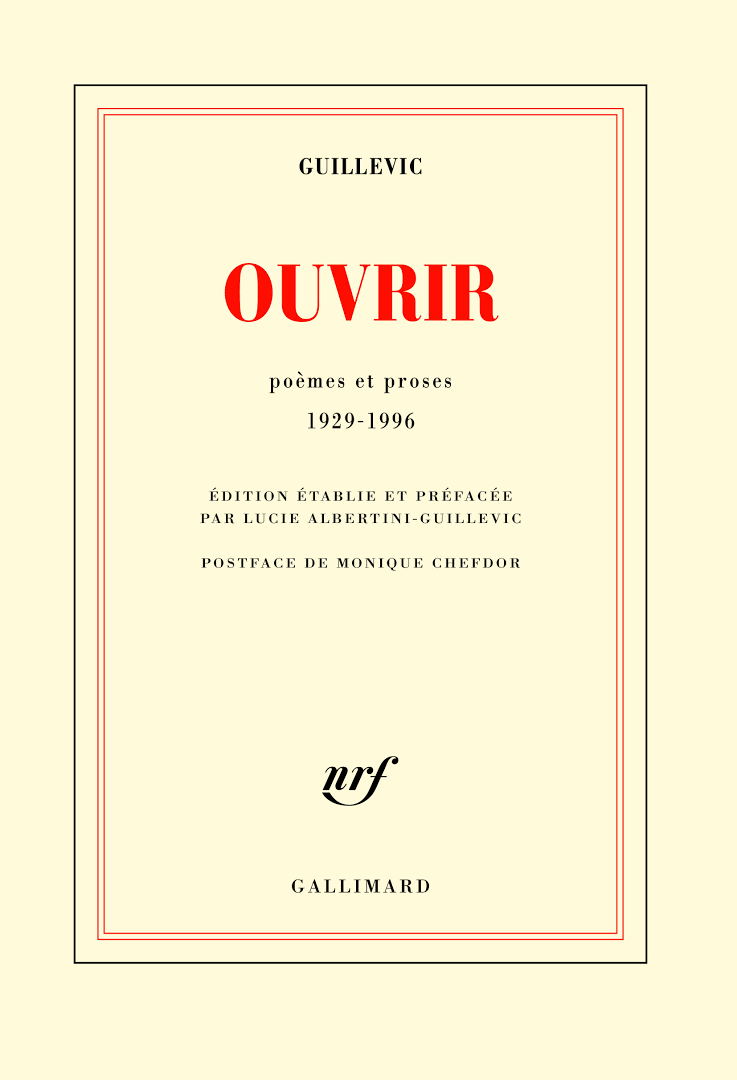Poetry and place: how could poetry be about anything other than place?
Living in the Antipodes, at the other end of the world from Europe, where the Northern night is Southern day and your winter snowstorm parallel our summer heatwaves, it is difficult to avoid a feeling of place. It is simply a matter of geography, history and circumstance. From the beginning of European colonisation of Australia, writers of poetry and prose, fiction and documentary, have tried to capture what it is that defines Australia, as a place, a place that is not Europe, that more often than not defies Eurocentric categories of description and classification. Successful or not, many such works have become well established in the public psyche.
One of the best known Australian poems is My Country by Dorothea Mackellar (1885–1968). The poem, originally published with the title Core of my Heart, was written when 19-year old Mackellar was staying in England and feeling homesick for the family farms in outback New South Wales. The second verse is considered by many to sum up much of what defines the Australian experience of place:
I love a sunburnt country,
A land of sweeping plains,
Of ragged mountain ranges,
Of droughts and flooding rains.
I love her far horizons,
I love her jewel-sea,
Her beauty and her terror -
The wide brown land for me!
But there is more to a poetry of place than well-metered declarations of love. In some sense, the language of a poem itself defines a geographical lineage, independent of any specific imagery employed in the poem. Dialect and local idiom can encode locality, sometimes with a high degree of precision. Australia has a long tradition of rhyming ballads, what have become known as “Bush Ballads”. Poets instrumental in developing this tradition include Henry Lawson (1867–1922), A.B. “Banjo” Patterson (1864–1941) and C.J. Dennis (1876–1938). All used vernacular language, rich in idiom of the day and place, but none more so than Dennis. Consider the following excerpt from the Introduction of his most famous verse novel, “The Songs of a Sentimental Bloke” (1915):
‘Er name’s Doreen …Well, spare me bloomin’ days!
You could er knocked me down wiv ‘arf a brick!
Yes, me, that kids meself I know their ways,
An’ ‘as a name for smoogin’ in our click!
I just lines up ‘an tips the saucy wink.
But strike! The way she piled on dawg! Yer’d think
A bloke was givin’ back-chat to the Queen.…
‘Er name’s Doreen.
I seen ‘er in the markit first uv all,
Inspectin’ brums at Steeny Isaacs’ stall.
I backs me barrer in — the same ole way –
An’ sez, “Wot O! It’s been a bonzer day.
‘Ow is it fer a walk?” … Oh, ‘oly wars!
The sorta look she gimme! Jest becors
I tried to chat ‘er, like you’d make a start
Wiv any tart.
The phonetic spelling, the abbreviations, and the slang mark this work unambiguously as early 20th Century Australian. Much of the idiom has now passed out of general use, but it is still recognisably embedded in its country of origin. (In case you’re wondering, a “bloke” is a man, “brums” are horses, “bonzer” is something really good; phonetically, “dawg” = dog, “barrer” = (wheel)-barrow; “ole” = old; “becors” = because, and so on… A full interpretation in contemporary English can be found in Note 1 at the end of this article).
Perhaps it is too easy to link a sense of place with poetry of older generations, where we have the benefit of hindsight, a wide frame of reference, and a view of the evolution of the language itself. Nevertheless, we can make a strong case that most poetry cannot avoid being linked to place, regardless of language, period, or even subject matter. Evidence for this comes not from literary theory or analysis, but from recent neuroscientific research on the way the brain constructs narrative.
Over the last fifteen years, neuroscientists have made astounding progress in understanding how the brain carries out complex cognitive tasks. Much of this work has taken advantage of modern brain scanning technology that allows researchers to see which areas of the brain are active under different conditions and circumstances. Almost any cognitive function now can be analysed by these methods, including the generation and processing of language, and its relationship with memory and imagination.
No single neural entity or process corresponds to “memory”. In contrast, there are many forms of memory, that vary in content and time scale. Some forms of memory last only a few seconds and barely reach conscious perception. Working memory is like this. Different forms of working memory allow us to build up an integrated visual perception of our surroundings as we look around; keep track of the meaning of a sentence we are hearing or speaking; holding a telephone number in our head between the time we look it up and dial it; and so on.
The type of memory most people find easiest to understand is “declarative memory”. These are memories you can describe verbally (in contrast to memories for actions, that often are almost impossible to accurately put into words…). It turns out there are two main subtypes of declarative memory: “semantic” memory and “autobiographical” memory. Semantic memory involves descriptive information about the objects and concepts we know about and can describe: the “nouns” of language. This knowledge of things is shared with others and we can look it up in a dictionary or encyclopaedia.
Autobiographical memory, in contrast, is intensely personal. This is your memory of your life and its events. Only you can experience your autobiographical memory: its viewpoint is uniquely yours. Consequently, narrative structure is closely linked to autobiographical memory. In principle, any autobiographical event is encoded in both time and space: when and where were you at this point in your life? However, autobiographical memory is notoriously unreliable. Details are quickly forgotten, and new elements may included in the narrative that do not match with other accounts of the same event.
Neuroscience research has illuminated two key features of this process. First, recalling an autobiographical memory necessarily remodels it. A retelling can reinforce pre-existing elements of the narrative, edit them, eliminate them or replace them. Second, imagining a future narrative involving yourself uses almost the same neuronal circuitry as recalling a past narrative of a real event. Thus, patients who have brain damage which inhibits their ability to recall or form autobiographical memories, cannot imagine a future narrative with themselves in it.
Highly specialised populations of nerve cells (neurons) in a discrete region of the brain (the hippocampus and nearby areas of medial temporal cortex) encode place and time during the formation of what will become autobiographical memory. One population of these neurons is called “place cells”. Different place cells record where objects are in relation to ourselves, as we move through three-dimensional space. These neural records are continuously updated as long as we keep moving. Therefore, they encode time-related information that is deeply linked to the spatial information. Another closely related population of neurons, “grid cells”, provide a continuously updated map of our own location as we move through space defined by the place cells.
Neuroscience cannot tell us how we come up with a story, how we choose the precise form of language to create a narrative in poetry or prose. But the neuroscience strongly supports the idea that any text with even a hint of narrative structure, or autobiographical reference, no matter how oblique, no matter how fictitious, must include an implied sense of place. Indeed, this conclusion resonates strongly with the work of cognitive philosophers, George Lakoff and Mark Johnson, who have documented extensively the metaphors of space deeply embedded in language (see their Philosophy in the Flesh,1999).
During 2012, I was fortunate to contribute to two innovative projects that linked poetry with specific geographical locations. Each project successfully used unconventional means to engage the public with poetry at these sites. A key to their success is their ability to take poetry off the written page and make it available to readers as they visit the sites, explore them, consider the environment surrounding them, and imagine people who may have been part of it. In doing so, these formats allow readers to build a stronger autobiographical experience, with deeper references to place, than would have been possible otherwise.
In 2011–2012, the City of Adelaide, South Australia, developed a series of public art projects to liven up some otherwise less interesting or underdeveloped areas of the city. One potential location was Bowen Street in central Adelaide. The street itself is mostly a featureless, short wide stretch of gravel. But it is surrounded by a major bus depot, an historic church, the Adelaide Central Market and many backpacker hostels. As such, the environment is a lively one, frequented by people of diverse ethnic and socio-economic backgrounds. It seemed an ideal location for a significant work of public art.
Mike Ladd is one of Australia’s best known poets and long-time producer / presenter of the Poetica program, broadcast weekly on Australian national radio (http://www.abc.net.au/radionational/programs/poetica/). Cathy Brooks is a multi-disciplinary visual artist working with a wide range of materials, often in the context of community or urban art installations (http://www.cathybrooks.com.au/).
Supported by the City of Adelaide, Ladd and Brooks developed a novel public art project, Signs of Life, featuring short epigrammatic poems (less than 20 words) displayed on a series of signs erected in the Bowen Street precinct. From more than 150 submissions for the project, they selected 30 texts by 16 poets. The signs were hand-made to resemble conventional street signs in shape, size and iconography, incorporating elegant designs linking the text and graphics. This approach builds on a long, if infrequently used, tradition. As Ladd remarks, “The short poem or epigram goes way back to the ancient Greeks who carved them on tombstones. There is a rich modern tradition of the visual or concrete poem, including the Xisto brothers in Brazil, Edwin Morgan in Scotland, Jas H Duke, Pi O, Thalia, Alex Selenich, and Richard Tipping here in Australia.”
Some of the texts have site-specific references, others relate more generally to street life and travel, while some present smart visual puns. For example, here the bus station:
“All passengers are required
to transfer to the next moment
departing right now as always”
Simon J Hanson
… the taxi stand:
“just one more armageddon sunset -
& a rank of taxis shuffling its pack”
Thom Sullivan
… the bike path:
“cyclist’s proverb
when one car window closes
a door will open”
Rachael Mead
… the people:
“I can’t write letters
I write leaves
in the sky
in the water
in the wind
You do read
what I write
You read with your skin”
Jelena Dinic
The installation proved very popular, with images of the components of the site turning up on websites and blogs around the world. As Brooks noted, “Imagine the surprise for locals and tourists when they are expecting another boring parking sign and look up and get a fragment of beauty, a satirical comment, or a bit of humour or philosophy instead.” Extended life for an urban installation is often a risky proposition and the future of this one is unclear at the moment. However, a beautifully produced booklet is available and most of the content still can found on-line ( http://www.cityofadelaide.com.au/sights/signs-of-life ). You can see more images of the installation at Cathy Brooks’ website: http://www.cathybrooks.com.au/2012%20SIGNS%20OF%20LIFE%20IN%20BOWEN%20STREET.html.
The Signs of Life project was a wonderful way of bringing poetry into public consciousness. It was a true poetry of place, not only in the content of the texts, but also because readers physically needed to be in the space to fully appreciate the context of the words, the images, and the constructed environment.
The Red Room Company is a not-for-profit organisation based in Sydney ( http://redroomcompany.org ) formed by Johanna Featherstone in 2001. The Company aims to “create, promote and publish new poetry in unusual ways”, and thereby “broaden the public’s definition of, and experience with, high quality Australian poetry”. By any criteria, the Red Room Company has been most successful in carrying out its agenda. For example, the Unlocked project, which has been running since 2010, works with inmates of New South Wales State Correctional Centres to “explore the social value of poetry and creative expression, its transformative and regenerative properties”. One important outcome of this work is that inmates have the opportunity to “build practical literacy and communication skills and the confidence to apply” through the practice of creative writing.
In The Disappearing project, the Red Room Company has taken a characteristically novel approach to site-specific poetry. Rather than produce a conventional print or on-line anthology, this project is built on an iPhone/iPad or Android app that links site-specific poetry with corresponding geographical data obtained via GPS. Originally run in Sydney in 2011, the project went national in 2012, incorporating over 200 poems from a wide selection of Australian poets.
The brief for The Disappearing project was intriguing: each poem should relate to something that has disappeared from the site in question. If you have the app, you can find the poem that refers to a site closest to your current location, using an annotated GPS-based map. You can also use the app to search the poems in the project by site or author. If you don’t have the app, you can still access the poems on the Red Room Company website: http://redroomcompany.org/projects/disappearing.
The poems in The Disappearing are diverse in style and content: some refer to a particular site in a very direct way, others are more tangential. Importantly, the poems work as stand-alone pieces. It doesn’t matter if you have never been to the place in question, but if you have, there is an undeniable extra layer of meaning or association. Nevertheless, most sites provide some background information that illuminates some aspect of its history or natural environment.
David Prater’s Clouds Afternoon Jazz Sprinkles makes explicit reference to time and place within the suburbs of Sydney. This section, Jazz, is set in the Atlantic Cafe, Elizabeth Street:
A little bird inside my cranium orders me to write
a poem on the subject of the old Atlantic Cafe but
I can’t do it. Who would care? All they ever seemed
to serve was steak and peas, & I never ventured
inside there anyway. Too busy moping, probably.
Why? They removed the soul of Strawberry Hills
just to make houses from its yellow clay years ago
& the pub that shares its name has since stopped
playing bad jazz. Oh yes, blows away the melody
it does, just like a windchime. Cue ragged Tibetan
prayer flags. The paper carries yet another article
about th’ Australian poetry, written for the over
68s. Cue Transvision Vamp, baby. ‘I don’t care’.
Close to my home in Adelaide, South Australia, Temporary by Alison Flett captures the incipient drama at the beach on a hot summer’s day when children and sharks vie for attention:
on the sand
we lickn
our icecream
sweet drip it
disappr its colours
in tween the grains
-
under the jetty
a cellophaned bouquet
strappd to the upright it was
a descanso for a child
got carried off
by a rip
-
in the water
with the kids some guy yell
shark I thought
he was jokn till I see
the fin the tail flick get out
I says quick
-
on the sand
my youngest ask if
we go in the water
again will it happn again
no I says it wont not
like that
Set in Brisbane, Queensland’s largest city, this excerpt from David Stavanger’s poem, fridge, concisely describes the transient nature of manufactured objects in the environment:
floats down river
worries about mud lice
and loss of power
stops in no parking zones
will recall
a brief encounter
with a Gospel piano
enters the playground of roofs
yields nothing
to hungry dogs
or startled onlookers
There is much of great value in the The Disappearing Project. Not only is the quality of writing uniformly high and engaging, its use of a popular technology platform represents an accessible — and successful — means to link word and place in way that is impossible with conventional media.
However, the poetry book is by no means obsolete. My final example of the contemporary exploration of poetry and place in many ways echoes the approach used by CJ Dennis nearly100 years ago: the use of local vernacular language, told in first person yet employing different voices to present an account of life at a particular time and place. Last Days of the Mill (2012) by poet Pete Hay and illustrator Tony Thorne does just that (http://lastdaysofthemill.blogspot.com.au/ ). This wonderful book is set in Australia’s island state, Tasmania, which is distinguished by its ancient cool temperate rain forests. These forests have been a source of conflict for many years as logging companies seek to increase their harvest of old growth trees whilst conservationists fight to preserve this biological heritage. Regardless of their position in this debate, everyone acknowledges that the saw and pulp mills provide an important source of employment for the local communities. So when a large mill closes, for whatever reason, the consequences can be disastrous for mill workers and their families.
In 2010, the paper pulp mill in the North-western Tasmanian town of Burnie closed down, 20 years after a tumultuous strike by mill workers. Around the time of closure, Hay interviewed some of the workers, while Thorne produced a series of evocative images of the mill and its machinery. From his interviews, Hay created ten monologues, each in a characteristic voice, employing the speech patterns and vernacular of his interviewees. The results are stunning, producing a complex mixture of oral history and poetic resonance. Some stories are tough and uncompromising, others surprisingly fragile and vulnerable. Take this example from Slow as an Old Wet Week, Jorgensen Street, Montello, 1992 which refers to strike-breakers (“scabs”) turning up at the mill and the high chance of ensuing violence with the unionised strikers:
He says these scab fellas
is all tattoos and black clothes,
that there’ll be blokes goin arse over tit,
cracked scones and blud noses and that.
Into the old rattletrap y’get, he says t’me,
get yrself home quicksticks now.
I started t’say not in a pink fit,’but he shut me up, sayin look,
all th sheilas is goin.
He has t’stay’f course.
Reckons he’ll be safe as houses, but y’can’t not worry -
he’s no great shakes with his dooks, me dear old Razor.
Or this reflection from Shit Sandwich, Great Lake shack, 2010:
My bloody secret life.
Times I wonder if it was all pathetic.
Th few people I let in all said th same thing -
fr chrissake mate, snatch th mill,
get y’self down th road t’th university -
and don’t think I wasn’t tempted.
But the mill was th real world, not
th fantastical stuff f’me weekends and nights.
Couldn’t bring meself to do it.
This is clearly poetry of place, speaking clearly with the voices of locals (for versions in more formal English, see notes 2 and 3, below). The magic here is that outsiders can gain some sort of knowledge of place that cannot be gained from encyclopaedias, a video, or perhaps even a visit to the location itself. Poetry of place, when it works well, as it does in all the examples above, allows us to experience a sense of familiarity with a part of the world we may never otherwise inhabit.
Notes:
Here are modern English interpretations of the examples quoted in the main text:
(1) from “The Songs of a Sentimental Bloke”:
Her name is Doreen. Well, spare my blooming days! ( = I don’t believe it!)
You could have knocked me down with half a brick.
Yes, me, who convinces myself that I know their (women’s) ways,
and has a reputation as a bit of ladies’ man in our neighbourhood!
I just line up and show off with a sexy wink.
But strike ( = knock me down with a feather)! The way she piled on dog ( = told me the error of my ways)
You’d think a bloke ( = a common man) was giving back-chat ( = being impolite) to the Queen.
Her name is Doreen.
I saw her in the market first of all,
inspecting horses at Steeny Isaac’s stall.
I back my (wheel-)barrow in ( = start up a conversation with her)
- the same old way —
and say, “Wow, it’s a fantastic day.
How about a walk? … Oh holy wars!
The sort of look she gives me! Just because
I tried to chat to her, like you would make a start
with any tart ( = a girl worthy of admiration, rhyming slang with “sweet heart”).
(2) from Slow as an Old Wet Week, Jorgensen Street, Montello, 1992:
He says these scab fellows ( =hired strike breakers)
are all tattoos and black clothes,
that there’ll be blokes ( = common men) going arse over tit ( = getting knocked over)
with heads cut open and bleeding noses and so on.
“Get into the old rattletrap ( = an old, barely working car),” he says to me,
“get yourself home as quickly as you can.”
I started to say “not in a pink fit ( = never)” but he shut me up ( = told me to be quiet), saying “Look, all the women are going.”
He has to stay, of course.
He says he’ll be as safe as houses ( = will not be in trouble), but you have to worry —
he’s not very good with this fists ( = cannot fight very well), my dear old Razor.
(3) from Shit Sandwich, Great Lake shack, 2010:
My bloody ( = amazing, cursed, unbelievable, boring, or any other adjective you prefer…) secret life.
At times I wonder if it was all pathetic.
The few people I let in (to my secret) said the same thing —
For Christ’s sake, mate, give up on the Mill ( = stop working at the Mill),
get yourself down the road to the University —
and don’t think I was not tempted (that is, I was tempted).
But the Mill was the real world, not
the fantastical ( = imaginary) stuff for my weekends and nights.
I could not bring myself to do it.









